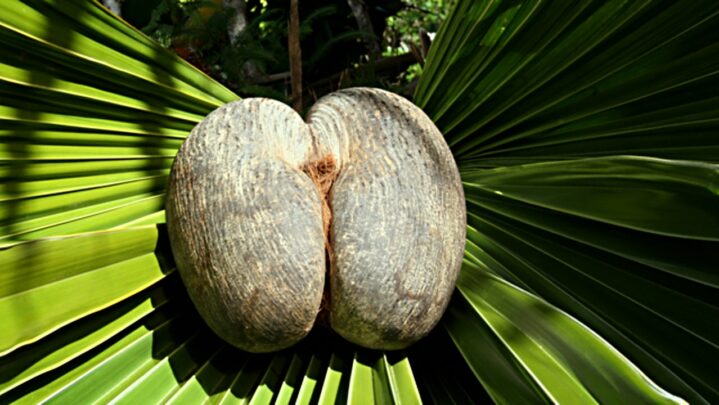Some of the most dynamic species that are peculiar to Seychelles can be found here. Coco de Mer, one of the most exclusive and contentious palm trees in the world, thrives on Seychelles’ Praslin and Curieuse islands.
The Coco de Mer is a French term that means “coconut of the sea.” This nut has gotten a lot of attention because of its unusual shape, which resembles a female bottom. It only grows on tall trees and is found in a small area in Seychelles.
The first Coco de Mer trees were discovered in Seychelles in 1743. It was even dubbed the “forbidden fruit” by General Gordon. He described the Vallee De Mai Reserve in Praslin (which is home to Coco de Mer trees) as the biblical Garden of Eden. As a result, the Coco de Mer was Eve’s ‘forbidden fruit’, as per Holidify reports.
However, the Coco De Mer palm has male and female trees, unlike the coconut palm. The female tree produces a butt-shaped nut, and the male tree produces phallic-looking catkins. The resemblance to human reproductive organs spawned new folklore that the trees uproot themselves and engage in a passionate carnal embrace during dark stormy nights when no one is looking, as per amusing planet reports.
According to mythology, anyone who sees the trees in love will die or become blind. The pollination of Coco De Mer is still a mystery, which adds to the palm’s attraction.
As per reports, in Seychelles, a nut is a priceless commodity, and the government has enacted a number of restrictions on its sale and transportation to other areas of the world in order to preserve its purity. Tourists must consequently adhere to these laws, as breaching them carries hefty fines and, in certain cases, even jail time. The Seychelles government oversees and regulates all Coco de Mer trees in the country, even those owned by private individuals.
Keep reading successyeti.com
Also Read: 17 Henry Ford Quotes For Business And Life





